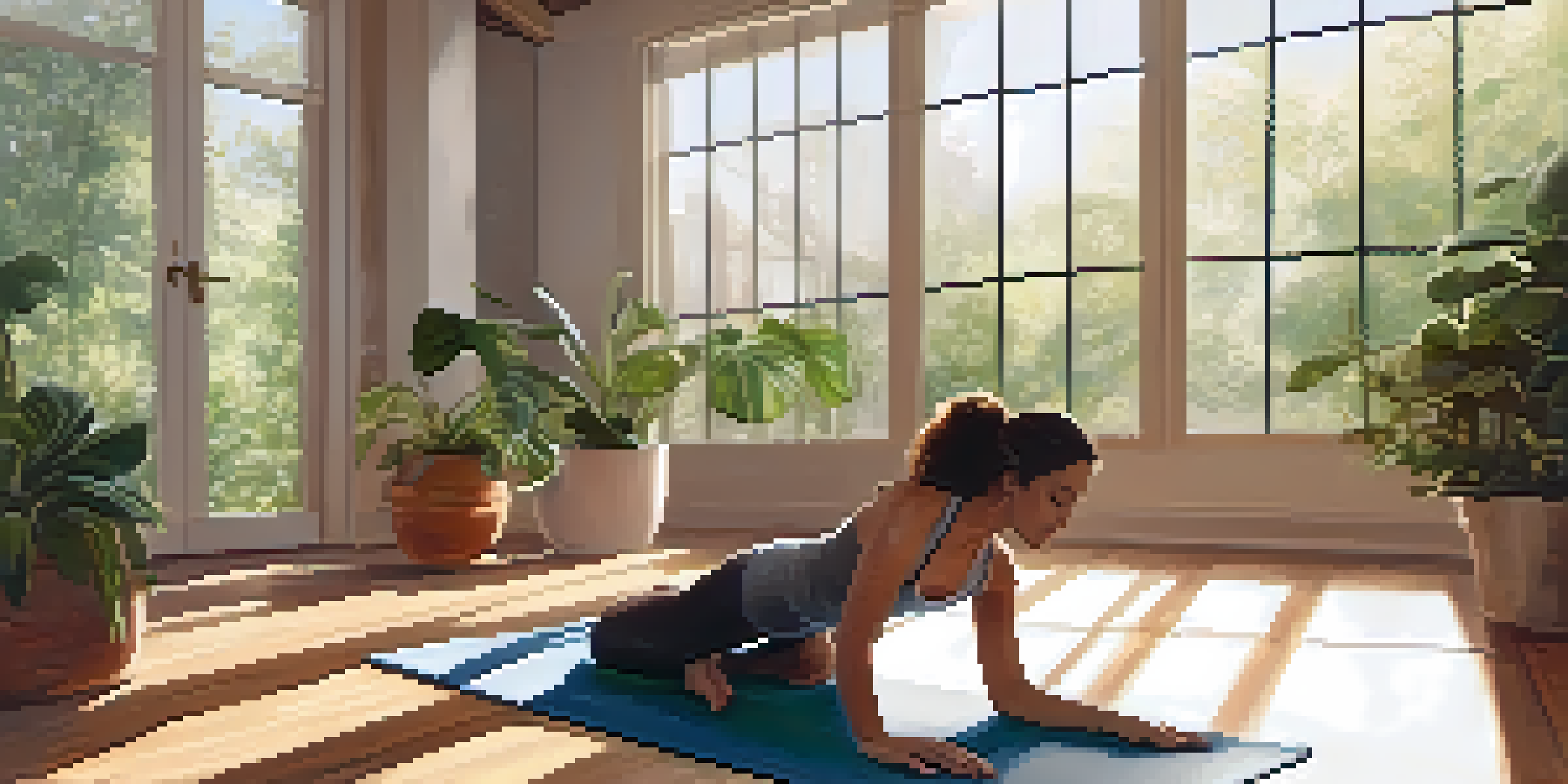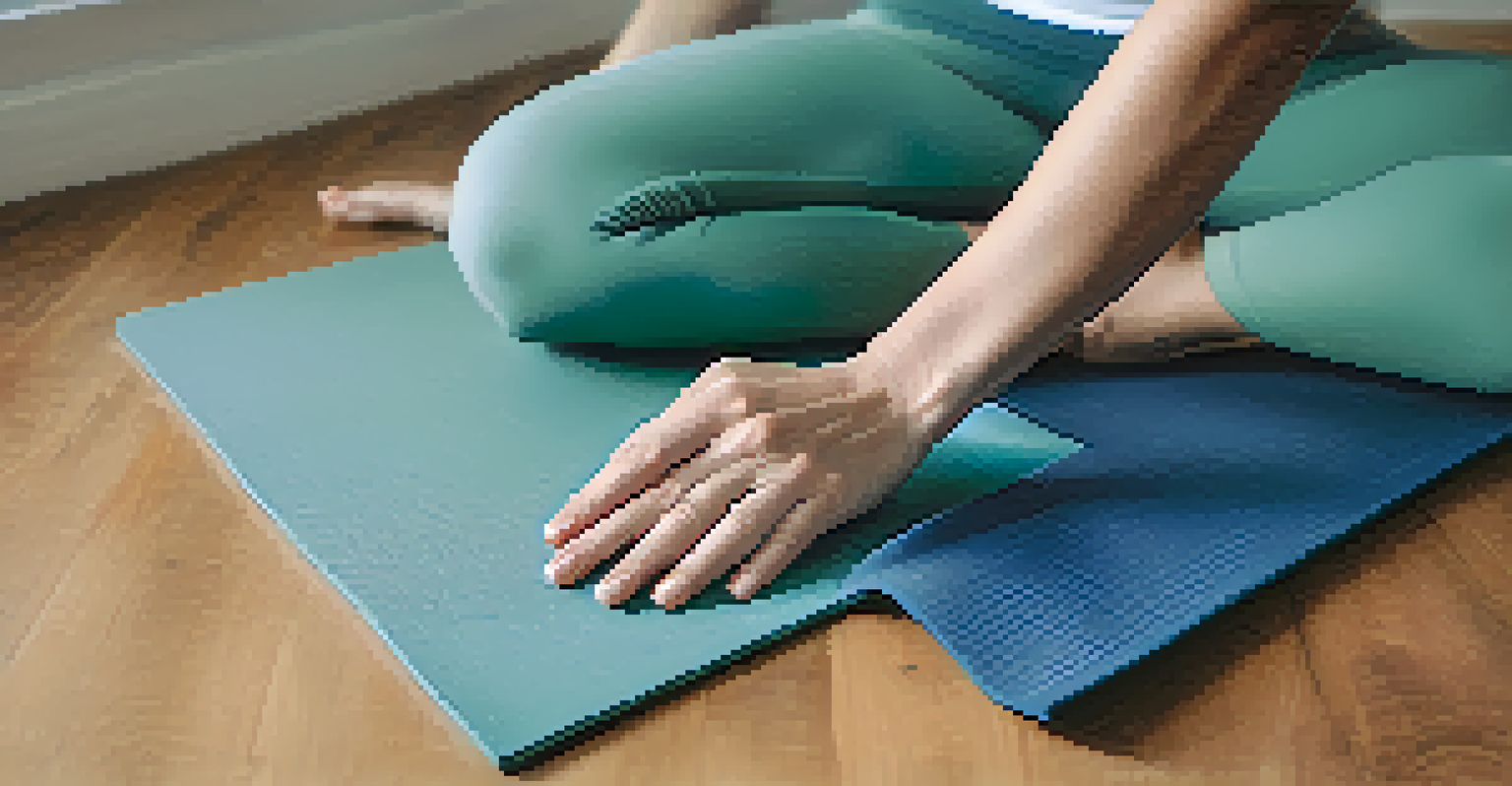The Science Behind Yoga and Improved Flexibility

Understanding Flexibility in the Body
Flexibility refers to the range of motion in our joints and muscles. It plays a crucial role in overall physical health, influencing how we move, perform daily activities, and engage in sports. When our bodies are flexible, we reduce the risk of injury and improve posture, making everyday tasks easier.
Flexibility is the key to stability.
The science behind flexibility involves the elasticity of muscles and connective tissues. This elasticity can be enhanced through various practices, and yoga stands out as one of the most effective methods. By regularly practicing yoga, individuals can break down muscle tension and increase joint mobility, leading to improved flexibility over time.
Moreover, flexibility isn't just about the physical aspect; it also has mental benefits. Engaging in yoga requires focus and mindfulness, which can help reduce stress and promote relaxation. This holistic approach to flexibility makes yoga a unique practice that nurtures both body and mind.
How Yoga Works to Improve Flexibility
Yoga combines static stretches and dynamic movements, targeting various muscle groups. Poses like the downward dog or pigeon stretch not only enhance flexibility but also strengthen the muscles involved. This dual approach ensures that as you become more flexible, your strength is concurrently developed, which is essential for overall fitness.

Additionally, yoga emphasizes breath control, known as pranayama. By synchronizing breath with movement, practitioners can deepen their stretches, allowing muscles to relax and lengthen more effectively. This focus on breathing helps facilitate a greater range of motion in the joints, contributing to improved flexibility.
Flexibility Enhances Physical Health
Improved flexibility reduces injury risk and makes daily activities easier.
The consistency of yoga practice also plays a vital role. Just like training for a sport, flexibility in yoga improves with regular practice. Over time, practitioners can notice significant changes in their body's ability to stretch and reach new poses, reinforcing the connection between effort and results.
The Role of Muscle Elasticity and Joint Mobility
Muscle elasticity is crucial when it comes to flexibility, as it determines how well muscles can stretch and contract. Yoga poses engage various muscle groups, promoting elasticity through sustained stretching. This is vital for athletes and anyone looking to enhance their physical performance.
Yoga is the journey of the self, through the self, to the self.
Joint mobility is equally important, as it allows for a greater range of motion. Certain yoga poses, such as hip openers, target specific joints, helping to improve their movement capabilities. This increased mobility is beneficial not only in yoga but also in everyday activities like bending, lifting, and twisting.
Maintaining both muscle elasticity and joint mobility can prevent stiffness and discomfort, especially as we age. Regular yoga practice provides a proactive approach to keeping our bodies agile and functional, ultimately supporting a healthier lifestyle.
The Impact of Regular Yoga Practice
Consistency is key! Practicing yoga regularly can lead to significant improvements in flexibility over time. Many individuals find that committing to a routine helps them achieve goals that once felt out of reach, such as touching their toes or transitioning into more advanced poses.
Moreover, regular practice creates a sense of body awareness. As you become more attuned to your body’s sensations, you can identify areas of tension or tightness. This awareness allows for targeted stretching and adjustments, further enhancing flexibility and preventing injuries.
Yoga Boosts Mind-Body Connection
Regular yoga practice not only improves flexibility but also fosters mental relaxation and awareness.
Incorporating yoga into your weekly schedule can transform not just your flexibility but your overall physical health. It’s a holistic approach that nurtures the body while fostering a deeper connection to oneself, making each practice session both rewarding and beneficial.
Scientific Research Supporting Yoga's Benefits
Numerous studies have explored the benefits of yoga on flexibility. Research shows that participants who engage in regular yoga practice experience marked improvements in flexibility compared to those who do not. These studies often highlight specific poses that are particularly effective for enhancing muscle elasticity and joint range of motion.
For instance, a study published in the Journal of Bodywork and Movement Therapies found that just eight weeks of yoga practice significantly increased flexibility in various muscle groups. This evidence reinforces the idea that yoga isn’t just a trend; it’s backed by credible scientific research.
Additionally, the mental benefits of yoga are supported by studies showing decreased stress and anxiety levels among practitioners. This connection between mental and physical flexibility emphasizes yoga's comprehensive impact on overall well-being.
Yoga Styles That Enhance Flexibility
Different styles of yoga cater to various needs and preferences, with some being particularly effective for improving flexibility. Hatha yoga, for example, is known for its slow-paced, gentle approach, making it ideal for beginners looking to increase their range of motion.
On the other hand, styles like Vinyasa or Ashtanga offer a more dynamic flow, which can challenge your flexibility while providing a cardiovascular workout. These styles encourage continuous movement and engage multiple muscle groups, promoting overall flexibility.
Consistency is Key for Progress
Regularly practicing yoga leads to significant improvements in flexibility and overall physical performance.
Regardless of the style you choose, the key is to find a practice that resonates with you. Enjoying your yoga sessions will keep you motivated and consistent, which is essential for reaping the flexibility benefits.
Tips for Maximizing Flexibility Through Yoga
To maximize your flexibility gains, it's important to warm up properly before diving into more intense poses. Gentle stretches or a short, slow-paced yoga session can prepare your body for deeper stretches. Think of warming up as getting your muscles ready for a big performance—it's vital for preventing injuries.
Incorporating props such as blocks, straps, or bolsters can also help enhance your practice. These tools provide support and allow for deeper stretches without compromising form. Using props can be especially beneficial for beginners or those with limited flexibility.

Finally, listen to your body. Every individual has a unique range of motion, and pushing too hard can lead to injuries. Embrace your progress, celebrate small victories, and remember that flexibility is a journey, not a destination.